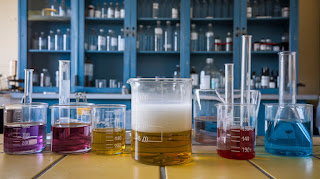"Turning Data Into Decisions: The Science of Quantitative Analysis"

International Chemistry Scientist Awards Quantitative analysis is the systematic application of mathematical and statistical techniques to measure and interpret numerical data. It is widely used across various disciplines such as finance, biology, chemistry, economics, and social sciences to uncover patterns, validate hypotheses, and make informed decisions. By employing advanced tools like regression analysis, machine learning algorithms, and computational models, quantitative analysis transforms raw data into actionable insights. 🔔 Subscribe for m ore insights on chemistry innovations! Website: chemistryscientists.org Contact us: contact@chemistryscientist.org Nominate now: https://chemistryscientists.org/award-nomination/?ecategory=Awards&rcategory=Award Don’t forget to like, share, and subscribe for more exciting content! Youtube Twitter Pinterest Instagram Tumblr #sciencefather#researchawards#...





